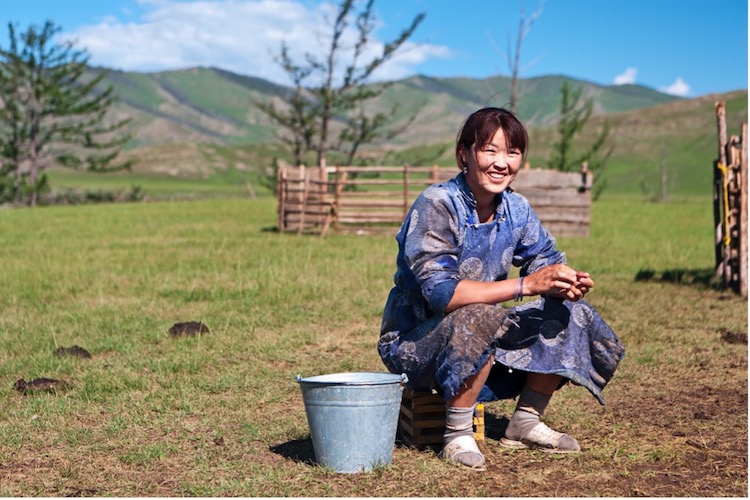
Viewpoint by Claudia Ituarte-Lima
Dr. Claudia Ituarte-Lima is a public international lawyer and scholar. She is senior researcher at the Raoul Wallenberg Institute of Human Rights and Humanitarian Law and is also affiliated to Stockholm University and the School of Public Policy and Global Affairs at the University of British Columbia. Ituarte-Lima holds a PhD from the University College London and a MPhil from the University of Cambridge. Twitter: CItuarteLima.
The Convention on Biological Diversity’s resumed sessions of the twenty-fourth meeting of the Subsidiary Body on Scientific, Technical and Technological Advice (SBSTTA 24) is taking place in Geneva March 14-29.
VANCOUVER, Canada (IDN) — We are in a critical moment for the future of biodiversity and healthy ecosystems. The last meetings prior to the adoption of the post-2020 global biodiversity framework (GBF) are taking place in Geneva now.
The ongoing negotiations will specify biodiversity-related commitments for the next ten years, and influence whether women and girls’ rights and agency are empowered in this framework.
Time has come to include a stand-alone target on equality for women and girls in the post-2020 GDF, as proposed by the CBD Women Caucus and UN Women and championed by Costa Rica and twelve other countries in ongoing Geneva meetings.
The current draft for such Target 22 proposes “Ensuring women and girls equitable access and benefits from conservation and sustainable use of biodiversity, as well as their informed and effective participation at all levels of policy and decision-making related to biodiversity”.
Recent achievements—which were not in place when the negotiations for post-2020 GBF started—can now contribute to making the proposed Target 22 a reality. A major advance is the Human Rights Council’s recognition of the right to a healthy environment (HRC Resolution 48/13), following decades of efforts not only by States but also by women, youth, indigenous peoples’ organizations.
Another key milestone is the Escazú Agreement, which entered in force last April, and is the first treaty to explicitly recognise the rights of environmental defenders, including women and girls defending biocultural diverse ecosystems and nature’s contributions to people.
The UN Secretary-General’s Call to Action on Human Rights has identified gender equality and equal rights for women in public participation and civic space among key areas that require extra efforts and attention.
The rationale for selecting these areas is “because opportunity exists to make significant advances in the realization of human rights, or the needs are so acute and trends so problematic that a greater effort is required”.
In selecting the indicators for Target 22, I consider it will be paramount to monitor and report on the proportion of women and girls who access and benefit from mainstreaming biodiversity, including through access to information, effective public participation, and access to justice.
While being a moderator in the recently-held Dialogue Series on the Escazú Agreement, human rights and healthy ecosystems[i], it became clear that women and girls’ equality go beyond non-discrimination. It must include an enabling environment to spur participation and action towards a healthy biosphere, the thin layer of Earth where land, water, and air interact supporting the diversity of life.
[This Dialogue Series was convened in October 2021 by the joint Swedish Environmental Protection Agency-UNDP Environmental Governance Programme in collaboration with Stockholm University, UNDP in Latin America and the Caribbean, UN Environment Programme (UNEP), the Office of the High Commissioner for Human Rights (UN Human Rights), and the Global Alliance of National Human Rights Institutions (GANHRI).]
Target 22 can help establish a baseline and track progress from commitments that States have already set for themselves in CBD Decisions Nos. XIII/14 and XIV/3 and the Cancún Declaration on mainstreaming the conservation and sustainable use of biodiversity for well-being.
This type of target and associated indicators can also help ensure that the proposed post-2020 GBF and the post-2020 gender action plan addresses broader decision-making concerning agriculture, forestry, mining, national development plans and disaster risk reduction.
CBD parties have already committed to advance core rights and people’s agency for environmental rule of law and environmental democracy in the Principle 10 of the Rio Declaration and the Sustainable Development Goals targets 16b, 16.3, 16.6, 16.7, 16.10.
Various countries already have national legislation in access to information, public participation and access to justice, including forty eight countries that are parties of the Aarhus Convention and the twelve countries that ratified the groundbreaking Escazú Agreement.
Furthermore, all CBD countries are also parties to the Convention on the Rights of the Child and one hundred eighty-nine are parties of the Convention on the Elimination of All Forms of Discrimination against Women.
Most States have explicit obligations to respect, protect and fulfil the equal rights of women and girls, which apply in the context of biodiversity and healthy ecosystems. The time is now to make commitments on women and girls’ equality a reality and catalyze global and local action for a thriving Earth, leaving no one behind. [IDN-InDepthNews – 25 March 2022]
Photo: In Mongolia, women herders are stepping up participation in community-based monitoring of environmental and human rights challenges brought by mining, with support from the joint Swedish Environmental Protection Agency-UNDP Environmental Governance Programme (EGP-Mining). Photo: iStock.com/Hadynyah.











